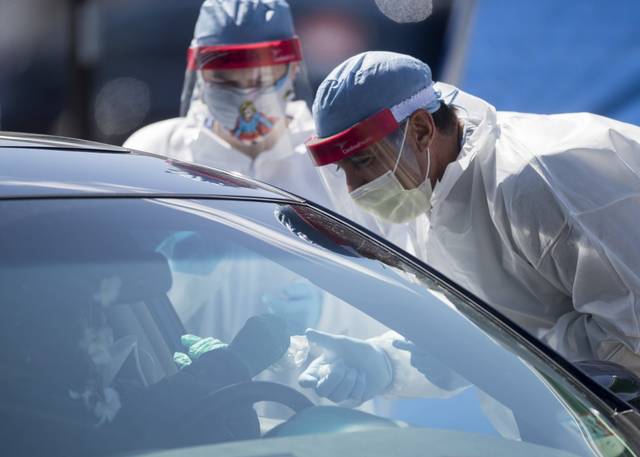Joseph Sabino Mistick: Paupers and kings and coronavirus
The danse macabre was a theme in medieval art that provided some comfort to regular folks during wars and plagues by portraying people from all walks of life dancing together towards their final resting place. It was clear then that death did not discriminate during a catastrophe.
Aristocrats and paupers and kings and commoners were depicted being led by skeletons to the same mortal end regardless of their earthly power. There must have been some small comfort for the masses in a 15th-century anonymous illustrated poem that depicts Death admonishing the emperor:
Emperor, the sword doesn’t help you;
Sceptre and crown have no value here.
I have taken you by the hand;
you must come into my dance.
For a long time now, death has not been so even-handed. Disease and accidents still strike across the board, but wealth and privilege now lead to treatment and cures and safety. And better neighborhoods, insulated from crime and toxins, result in longer and healthier lives.
No one should begrudge anyone else a better and longer life. But as the coronavirus death toll continues to climb in America, it is more clear than ever that privilege buys years of life that others cannot afford. This modern plague does discriminate.
While statistics are changing rapidly, we know that coronavirus deaths turn on where you rank in society. Just take a look at who is dying where.
According to the Los Angeles Times, in Los Angeles County the highest death rates have occurred in the poorest neighborhoods. And working class neighborhoods have had death rates that are four times higher than the county death rate.
Barbara Ferrer, the county’s public health director, has called for “increased testing, better access and connection to healthcare and support services, and more accurate, culturally appropriate information about covid-19.”
In New York City, WABC reported that those ZIP codes hardest hit by the coronavirus have “a larger percentage of minorities with a higher poverty level.”
Mayor Bill DeBlasio has promised to “double down on the strategies that reach people who are the most vulnerable.”
And the rural poor are not spared. In Mississippi, one of 14 states that have not expanded Medicaid and where one in five people live in poverty, blacks are 38% of the population but they account for 62% of the coronavirus deaths.
“It’s not that they’re getting infected more often,” Dr. Anthony Fauci recently said of the poor. Instead, Fauci ties the higher death rate to underlying chronic medical conditions that afflict minority communities — diabetes, hypertension, obesity and asthma.
Dr. Thomas Frieden, former director of the Centers for Disease Control and Prevention, has described epidemics as “guided missiles attacking those who are poor, disenfranchised and have underlying health problems.”
Donald Trump conceded a big coronavirus takeaway accurately when NBC’s Peter Alexander asked him if the well-connected should go to the head of the line for coronavirus testing.
“No, I wouldn’t say so,” the president replied. “But perhaps that’s been the story of life.”
That story is true but not good enough. And it has to change. Nobody has to be pulled down. The rest of America must be pulled up.
Joseph Sabino Mistick can be reached at misticklaw@gmail.com.
Remove the ads from your TribLIVE reading experience but still support the journalists who create the content with TribLIVE Ad-Free.

